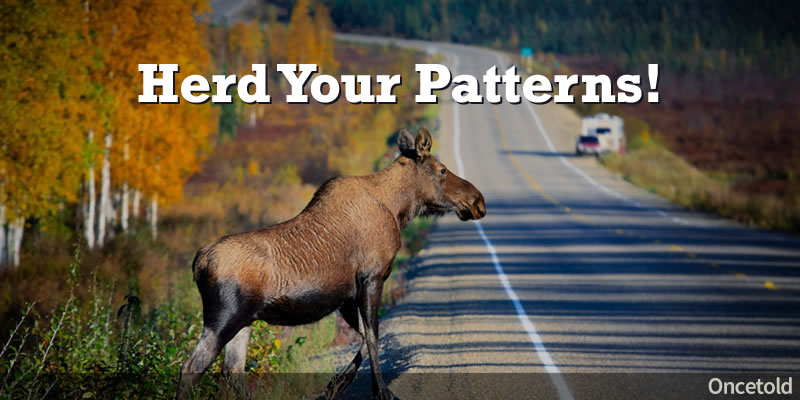
Sort and Find Patterns
Filling a lot of buckets
If you've been taking this seriously and have finished reviewing your entire list of all 315 links, then great job! You’ve reached an epic point in this course where the real fun begins.
If you think about it, if you averaged 10 interesting points per site, then you have over 3,000 line items of details that include snippets of sentences, ideas, this phrase, that phrase, new keywords, powerful – all sorts of stuff! It’s a huge pile of notes.
You’ve also come to realize that research is hard work. The good news is all that research is about to pay off!
Walking Your Notes
In Lesson 07 - Lurk with a Purpose, I introduced you to the concept of walking your sources. Walking your notes is a similar process where you take the time to evaluate your notes for their true value. Only in this process, instead of weeding out your links, you will organize your notes into categories, or into what I like to call buckets.
Buckets are just like they sound – a big, empty bowl we put things in so they don’t spill out. If you want to stay with the animal watering hole metaphor you could think of this process as ranch sorting where you figure out how many cows to cut from the herd.
Preparing Your Buckets
Another way to look at buckets is to think of them as story themes. If you have a bucket that is all about one specific topic then you could technically link all those stories together.
Sometimes, during this process, the entire focus of your podcast might change when you find out there are not many sources online. This happens in several categories where the information you’re looking for just isn’t available. Why? Because nobody thought to collect it and post it online.
Your job as a podcaster is to collect as many story themes into as many buckets as possible. However, there may come a point when you need to take your show on the road. You may have to interview people with first or second-hand knowledge of a story, you may have to find hardcopy documents that tell the story, or you may actually have to become the story itself by visiting a location or taking part in an event.
Resign yourself to the fact that not everything is online.
That being said, what is online is still a treasure trove of information. Before you need to worry about the gaps in your story that are not readily available you need to first understand what you do have.
Trust me, if you've followed this course up to this point, you have a lot of stories!
To begin sifting through your 3,000+ line items of notes, I like to modify my Google Sheets document by creating tabs for each new bucket I create. Later, when I’ve gone through all my notes, I can move these tabs into their own document. I like the tab approach because it allows me to work within the same document, minimizing excessive cutting and pasting.
Filling Your Buckets
To start building buckets all you need to do is take each note, decide what bucket tab to copy it to, and paste it there. The process of sorting and sifting through 3,000+ notes is simple yet time-consuming.
Attack it in chunks!
During this process, you will come across several notes that can be in multiple buckets. When that happens all you need to do is put that note into any bucket you decide fits. I also add a new column for decisions like this. It’s better to jot down your reasoning now while you still know why than to try to remember why you made that decision in the first place.
There Are No Wrong Buckets
When you go through this process please note that there are no wrong answers. These are your notes, your buckets, and your decisions. If you make a mistake, correct it. If your buckets are too broad, narrow them to fit a crispier story topic.
These are the kinds of decisions that require you to be the one doing the sorting. You need to become intimately aware of the totality of both your sources and your topic. If you don’t you will miss the magic that this process will produce: patterns.

In Search of Patterns
Once you have all your notes sorted into buckets, it’s time to go through each bucket and start grouping notes together. You could think of this as mini-buckets or buckets-within-buckets (bucket-ception) as you start moving notes around to spot what can be grouped together, what stands out, what has the most notes, or even how you could start categorizing these little buckets into different kinds of stories.
This is where the magic happens!
With each bucket, you are looking for patterns. Often, the connections between two or more notes form something interesting, often in a way you had not noticed before.
You may also notice that as you create these new connections some stories may be connected to bigger themes while others might turn out to be their own buckets altogether. Combine or divide them as you see fit.
Ultimately, your end goal will be to turn all 3,000+ notes into at least 12 buckets. Don’t worry if you have more. My first attempt at this resulted in 45 buckets which means your results will vary. So long as you have a minimum of 12 buckets, you should be okay.
In the next lesson, we will prioritize all these unrefined buckets into themes we can use to build or first episodes. See you in the next one!





